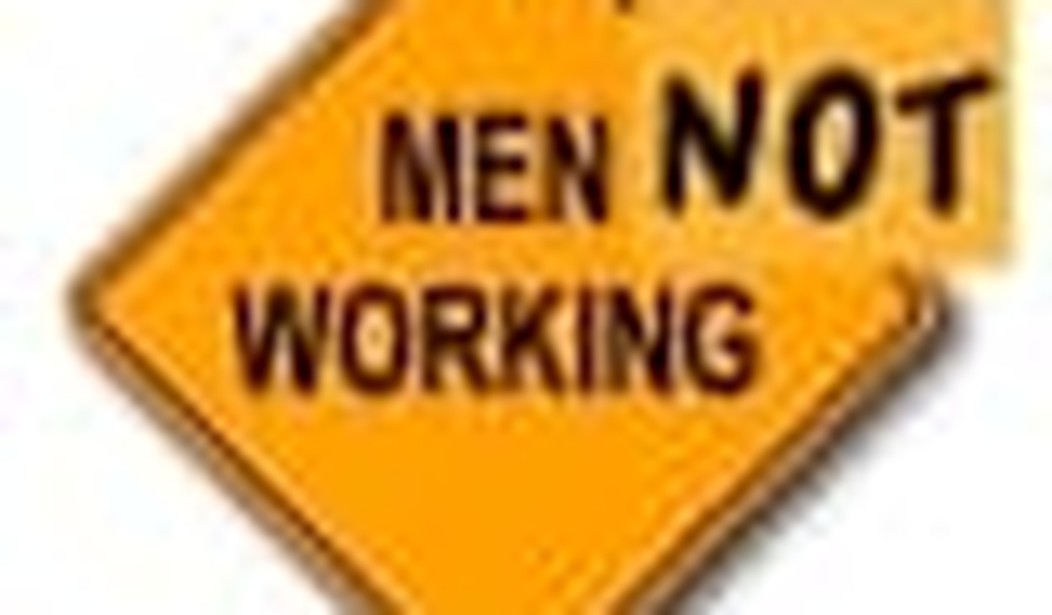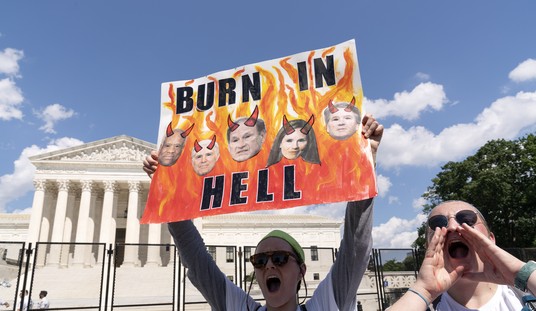Analysts didn’t have to scratch very far beneath the surface of the government’s July 2 report on the employment situation to find troubling news.
While the disappearing workforce and “lackluster” private sector job growth got most of the ink and bandwidth, what caught my attention was the renewed spike in the unemployment gender gap.
As recently as 2005, as seen here, the average unemployment rate for 20-and-over men was a bit lower than the rate for women (4.4% vs. 4.6%). During the next two years, those rates were virtually identical.
As seen here, after small differences during the first half of 2008, the seasonally adjusted unemployment rate for men first exceeded that of women by over a half-point in July of that year. It just so happens that this was the first month of the recession as normal people define it and the first full month of what I have been calling the POR (Pelosi-Obama-Reid) economy since its inception.
By August 2009, the unemployment gender gap had grown to 2.5 points. It basically stayed there for the next three months, and then began to fall slowly. But in June, it widened again to 2.1 points (9.9% for over-20 males vs. 7.8% for over-20 females) from May’s 1.7 points (9.8% vs. 8.1%). Given what happened when the rates first significantly diverged two years ago, the resurgence of the gender gap may foreshadow the double-dip recession so many observers have begun to fear, even on the left.
While the degree of the male-female unemployment divergence is without precedent, it builds on a 30-year marketplace trend.
From 1948 to 1981, with only rare and tiny exceptions, the unemployment rate for women exceeded that of men, even during economic contractions. That changed during the recession of the early-1980s. In 1982 and 1983, average 20-and-over male unemployment bumped up against 9%, while female unemployment rose to just above 8%. Male-female differentials of similar size reappeared during the next two downturns in 1991-1993 and 2001-2003 even though they were far less severe. But in each case, the rates returned to rough equality when the economy improved.
At its worst, the “man-cession,” the informal term for the male-female unemployment differential, has often been 2-3 times as big during Obama’s term as any gap previously seen. It seems to be heading in that direction again.
Why did this happen?
In this recession, many of the jobs which were lost and in many cases disappeared forever were in male-dominated sectors like the automotive industry and construction; free but unfair trade and the Fannie Mae/Freddie Mac-driven housing bubble have been key contributors to their respective declines. Meanwhile, certain fields which have traditionally had a higher percentage of women, including education and health care, continued to experience job growth or at least didn’t contract.
This job market reality, along with the government’s willingness until very recently to continually extend unemployment benefits to as many as 99 weeks, has likely led a disproportionate number of out-of-work men to avoid reconciling themselves to the need to switch to often lower-paying careers. Instead, while cashing their checks, many are still naively trying to find jobs that aren’t out there.
Now let’s look at root causes of the problem that have taken decades to develop. The overriding theme is that if education is destiny, American males on the whole appear destined not to do as well as females when times are bad:
- In 2006, the high school dropout rate, which was 1.5 points higher for girls in 1970, was 2 points, or almost 20% higher, for boys (10.3% vs. 8.3%).
- A 2007 study led by James Heckman of the University of Chicago asserted that “the pattern of the decline of high school graduation rates by gender helps to explain the recent increase in male-female college attendance gaps.”
- The gender gap in college attendance for at least the past several years has returned. In late April, Uncle Sam’s Department of Labor told us that after three years of almost equal gender enrollment by high school graduates (2006, 2007, 2008), 202,000 more women than men from the class of 2009 went on to college. Women make up almost 55% of the current year’s freshman class.
The situation with African-Americans, where male and female 20-and-over unemployment in June were 17.4% in 11.8%, respectively, explains almost one-third of the current 2.1-point gender differential, even though African-Americans make up only 12% of our population. Regrettably, that’s not surprising. On top of the overall trends just cited, second-rate urban public schools have had persistently high male dropout rates while poorly equipping those who do graduate for even the jobs they could do. It’s fair to surmise that conditions in these schools, when combined with the tragic peer pressure to avoid “acting white” by achieving good grades or even acting responsibly, have probably hurt African-American males more than their female counterparts. Other negative cultural influences haven’t been helpful either.
Given its size and causes, it’s fair to ask when — or even if — the current “man-cession” is going away.
Achieving that happy result will first require a return to genuine prosperity of the type the nation experienced during the mid- to late-1980s, mid- to late-1990s, and 2004-2007. The Obama administration’s current economic policies are on an often self-admitted path to high unemployment “for possibly years to come.” Many currently unemployed men, particularly the intractably low-skilled, won’t be getting back to work for quite awhile if the economy doesn’t significantly improve.
Other helpful developments would include a “you’ve come a long way baby” acknowledgment that the noble war for female gender equity and equality in the workplace has largely been won; calling off “The War Against Boys” that is still being fought at too many schools; and shrinking the size of the public sector so that private individuals and firms can create new products, services, and jobs instead of living in fear of what their government will do to them next.
The prognosis for all of this occurring soon: very doubtful.









Join the conversation as a VIP Member